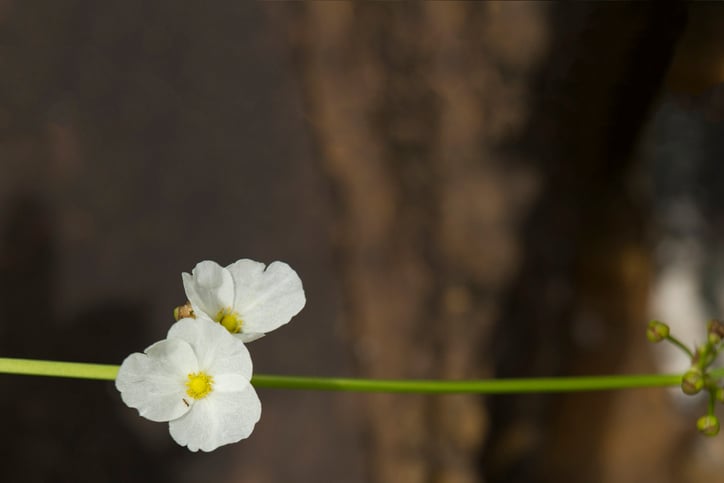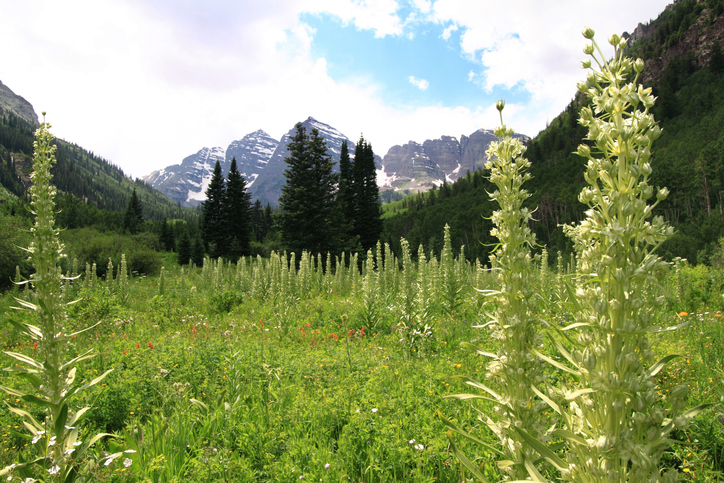Spices Come From What Part of the Plant
It may seem like a weird concept to some people, but there are quite a few plants that are banned in the United States — and not just ones that can be used for making certain illicit drugs. When the federal government defines a plant as noxious, it becomes illegal to import that plant or to carry it across state lines. Many states also maintain their own lists of banned plants that may be more specific threats to their native flora and fauna.
So what exactly causes a plant to be considered noxious? According to the United States Department of Agriculture, the legal definition of a noxious plant or plant product is one that can cause damage to crops whether directly or indirectly. The USDA also notes that noxious plants may cause direct or indirect damage to livestock, poultry, irrigation, navigation, or natural resources. Plants with a Not Authorized Pending Pest Risk Analysis (NAPPRA) designation may not be imported into the country, period. You may already know about some of these outlawed plants, but the rest may come as a complete surprise.
1. Barberry

Known to botanists as Berberis vulgaris, the common barberry is currently classified as a noxious plant in several states, including Massachusetts, Connecticut, Michigan, and New Hampshire. Covered in small, serrated leaves, the shrub may grow to as tall as 13 feet. The barberry produces small fruits that are rich in vitamin C but very sour. Although it has a noxious status in some states, there are still proponents of the plant who say it can be used as a natural medicine.
Next : The pretty flower that was banned in Boston
2. Creeping buttercup

The low-growing, fast-spreading perennial that goes by the scientific name Ranunculus repens is a weed of concern throughout many regions of the United States, especially in ditches and damp areas. Because it sends out long, strong runners, creeping buttercup is virtually impossible to eradicate once it's become established. Don't be fooled by its glossy yellow flowers; this pesky plant is toxic to grazing animals and causes blisters on humans. Currently, the creeping buttercup is banned in Boston and everywhere else in Massachusetts.
Next: Remember to not plant the following flower
3. Forget-me-not

It's hard to believe that such a pretty little flower would be classified as a noxious pest, but it is. In fact, the European forget-me-not invaded North America and started choking out native species as early as 1886, explains the Great Lakes Aquatic Nonidigenous Species Information department of NOAA. The botanical name for this lovely albeit invasive plant is Myosotis scorpioides, in reference to its scorpion-shaped inflorescence, or cluster of flowers. Currently, forget-me-not is illegal to plant in Massachusetts and Connecticut.
Next: The vine that ate the South
4. Kudzu

In the state of New York, some people are trying to eradicate young kudzu with roaming herds of grazing animals. When that fails to work as well as they're hoping, New York may opt to join Connecticut, Massachusetts, and Florida in their statewide ban on the plant. Known to botanists as Pueraria montana, the invasive plant is also called Japanese arrowroot, foot-a-night vine, or simply "the vine that ate the South." Kudzu is a member of the bean family and was once promoted as livestock feed. Currently, kudzu volunteers can be found in areas as diverse as Ontario, Texas, and Hawaii, explains the New York Invasive Species Information department.
Next: A sweet but sticky problem
5. Sycamore maple

Botanists call it Acer pseudoplatanus. The rest of us call it the sycamore maple. Native to Central Europe, the sycamore maple establishes easily from winged seed pods that can travel some distance from the parent tree. Excellent for instrument making, sycamore also provides a sweet sap that can be used to make alcoholic beverages. It make great firewood, too. So, why is the sycamore maple illegal in at least three states? Because it's a non-native tree that can overwhelm local ecology. Currently, cultivation of the tree is banned in Connecticut and Massachusetts, and you can't grow sycamore maple in the city of Portland, Oregon, either.
Next: Don't even think about growing this kind of grass
6. Wild sugarcane

As its botanical moniker, Saccharum spontaneum, suggests, wild sugarcane is a sweet-tasting plant that grows spontaneously anywhere. Nonetheless, propagating wild sugarcane can get you in trouble with the plant police. Unlike commercially grown cane, wild sugarcane produces very little usable sugar, explains the University of South Florida. Classified as a noxious weed by the USDA, wild sugarcane is highly regulated in Florida, South Carolina, and Massachusetts. The grassy cane is quarantined in California and Oregon and is considered a prohibited plant in Minnesota, Alabama, and Vermont.
Next: Florists sell it, but you can't grow it
7. Yellow iris

Sold in flower stores from coast to coast, the lovely yellow iris is ilegall to grow in at least six states. In its native country of Scotland, Iris pseudacorus offers breeding privacy for an endangered bird called the corn crake. In several parts of the United States, the yellow iris is considered so invasive, residents are banned from cultivating it. Once the boggy plant takes hold, it can be almost impossible to eradicate. Sure, it's pretty, but the problem with yellow iris is that it takes over habitats and chokes out native species. Currently, one may not cultivate yellow iris in Montana, Massachusetts, New Hampshire, Oregon, Connecticut, or Washington state.
Next: Good enough to eat, but don't grow it
8. Garlic mustard

In its native Europe, Alliaria petiolata has plenty of natural enemies to keep it in check. This is not the case in eight US states where deliberate cultivation of the aromatic plant is banned. Originally brought to the United States for use as a culinary herb, garlic mustard wreaks havoc everywhere it goes. Not only does the plant interfere with the reproduction of many American butterflies, it has an aggressive tendency to overtake native plants and become the dominant species. Currently, garlic mustard is prohibited in Alabama, Connecticut, Massachusetts, and Minnesota. The plant is also banned in New Hampshire, Oregon, Vermont, and Washington state.
Next: A fishy situation
9. Aquarium plants

Plants that thrive underwater make an attractive addition to fish tanks and goldfish ponds. That's the good news. The not-so-good news is that cultivation of many aquarium plants is outlawed in more than a dozen US states. For instance, floating water hyacinth, or Eichhornia crassipes, is prohibited in Alabama, Arizona, Arkansas, California, Florida, and Louisiana. The pretty aquarium plant is also against the law in Louisiana, South Carolina, and Texas. Cabomba is another plant that may be used to oxygenate a home aquarium. They become problematic when bits of these plants are flushed or otherwise make it into local waterways. For this reason, Cabomba caroliniana is banned in California, Connecticut, Maine, New Hampshire, Vermont, and Washington state.
Next: This banned plant may quack you up
10. Duck lettuce

When it's not overgrown and choking out native species, duck lettuce provides plentiful nutrition to fish, bullfrogs, and yes, ducks. Because it requires a lot of nutrients to thrive, however, Ottelia alismoides is known to cause problems with growth of nearby native plants. Once it's taken hold, duck lettuce can be very hard to get rid of. Classified by the USDA as a noxious weed throughout the nation, duckweed is also specifically prohibited in Alabama, California, Massachusetts, Oregon, both Carolinas, and Vermont.
Next: Even Popeye can't plant this
11. Chinese water spinach

Called water morning glory or Chinese watercress in some regions, Chinese water spinach is quarantined or prohibited in numerous US states, including Alabama, Arizona, and Arkansas. Somehow, the viney volunteer managed to escape cultivation in the East Indies and make its way to American wetlands where it forms thick, floating mats that choke out native species. Despite its popularity as an edible vegetable in Taiwan and the Philippines, the plant is unwelcome in California, Florida, Texas, Oregon, and several other states.
Next: A prickly situation
12. Jointed prickly pear

This South American native causes big trouble for farmers and livestock in countries as diverse as South Africa and Australia. Sometimes called tiger pear, the spiny cactus thrives along roadsides, pastures, stream banks, and grazing lands. The prickly plant may propagate when a once-pretty houseplant is thrown away. Broken segments of wild prickly pear can travel on wind and animal fur and invade any place they land. Cultivation of jointed prickly pear is outlawed in many US states, including California, Alabama, Oregon, South Carolina, and Vermont.
Next: Prohibited in paradise
13. Wingleaf passionfruit

According to the Hawaiian Ecosystems at Risk project, non-native plants and other organisms are taking over island ecosystems at an alarming rate. HEAR explains that the 50th state is being subjected to invasive species at more than 2 million times the usual rate. For this reason, a number of non-native plants are currently quarantined in the Hawaiian Islands. Among the outlawed plants are wild garlic, plume poppy, Scotch broom, and several varieties of passiflora, including wingleaf passionfruit.
Next: Don't even think of growing this devilish plant
14. Devil's thorn

Native to the Mediterranean, Emex spinosa is known to infest coastal habitats where it crowds out native species. Not only does this spiny pest steal nutrients and sunlight from indigenous plants, it also provides a prickly pod that you never want to step on. Currently, devil's thorn is problematic mostly in southern California, but it's been preemptively prohibited in a number of states, including Oregon, Florida, Hawaii, Minnesota, and Massachusetts.
Next: Scratching the surface
15. Itchweed

With an ability to grow up to ten feet tall, itchweed is an invasive species that thrives in a variety of conditions, especially where the ground has been disturbed. This large member of the grass family boasts blades that cause welts and itching to anyone who has the misfortune to touch them. Itchweed is currently prohibited in numerous states, including Arkansas, Florida, Texas, Minnesota, and Vermont. You might not want to cultivate a plant with such an unappealing name, anyway.
Spices Come From What Part of the Plant
Source: https://www.cheatsheet.com/culture/plants-that-are-banned-in-the-us.html/
0 Response to "Spices Come From What Part of the Plant"
Post a Comment